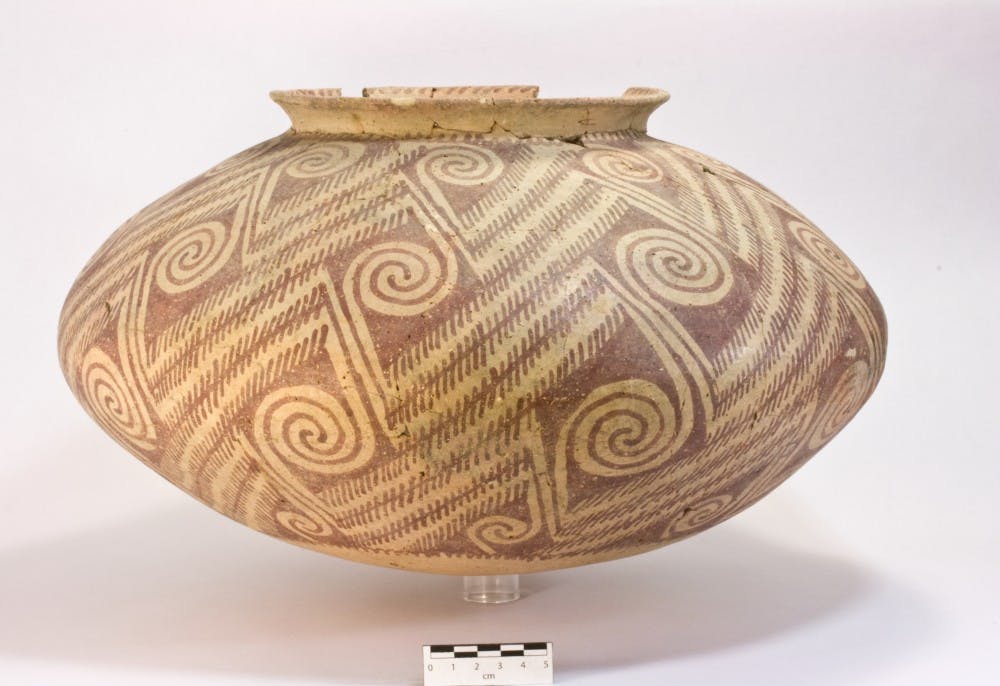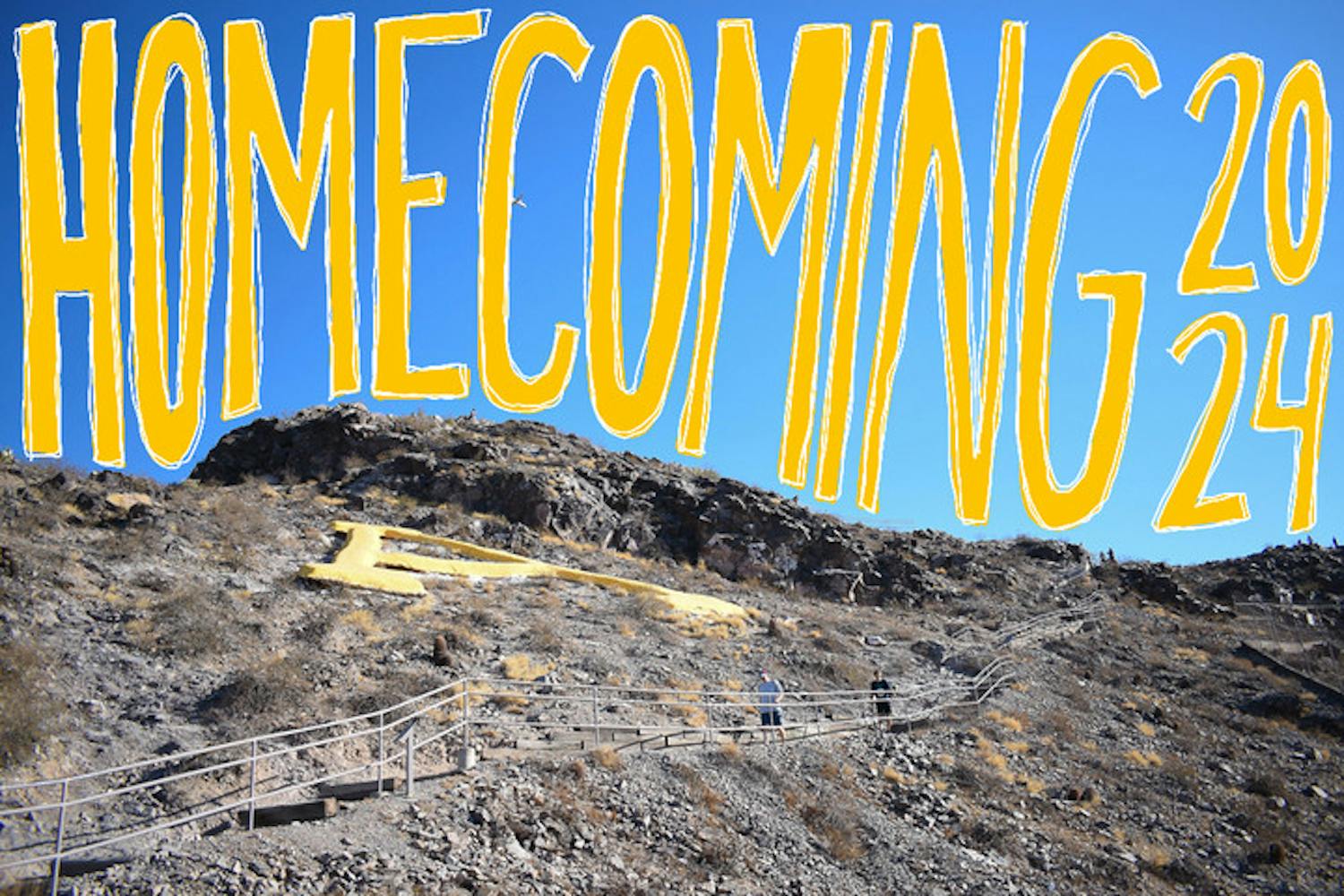 Shown is an example of a native American artifact that was found in Arizona. While it was not found on campus, many artifacts of varying preservation are found regularly. (Photo Courtesy of Glen E. Rice)
Shown is an example of a native American artifact that was found in Arizona. While it was not found on campus, many artifacts of varying preservation are found regularly. (Photo Courtesy of Glen E. Rice)Fraternity residences on Alpha Drive are a thing of the past, but ancient history was buried beneath the remnants of the now-demolished fraternity houses.
Glen Rice, a former ASU professor and an archaeologist at Rio Salado Archaeology, said a recent excavation of the land on Alpha Drive is still being analyzed but may offer archaeologists crucial insight into the extent of trading in the Hohokam village, which extends to the base of "A" Mountain.
The village was occupied by the Hohokam between approximately 450 and 1400 and is known as La Plaza de Tempe. Rice said the dig near Alpha Drive will help archaeologists fill in the pieces of a puzzle that tell the story of the ancient village.
"This area was very heavily populated by the Hohokam," he said. "And even though we didn't find many houses, we found some fantastic trash pits, which included everything from pottery to fish bones to stone tools." Rice said the presence of shells from as far as West Mexico and ceramics from Gila River were found in the excavation site near Alpha Drive.
These details could reveal quite a bit of information about the extent of trade interaction in the Hohokam village, Rice said.
RSA is a private cultural resource management firm that is contracted by ASU to preserve the history and cultural resources buried below the earth before new construction, he said.
Public lands must comply with federal, state and city laws, which are in place to make sure that new construction projects do not destroy traces of historic artifacts.
Most of these laws did not come into effect until between 1960 and 1990 after much of the Tempe campus was already built. The excavations are being done "piecemeal" as the University knocks down old buildings or begins new construction, Rice said.
He said archeological monitoring is done during any University construction .
"We excavate and then preserve the knowledge of the site in the records we keep and the artifacts we curate or repatriate," he said.
The recovery of any burials or associated materials are repatriated to any descendant tribes, he said. In the case of the Hohokam, the descendent tribes are the Desert O'odham and the River O'odham.
Rice said he would not confirm or deny the presence of any burials at the La Plaza site in respect to the wishes of the descendant tribes.
"The Native Americans feel that American mainstream society, which has moved into their territory, treats burials and their ancestors with disrespect," he said. "They think that we have a ghoulish fascination with dead bodies, so they ask us not to talk about it."
He said an archaeological report on the findings under the land near Alpha Drive will be officially released and available to the public in approximately a year. Robert Forrest, an environmental planner at Valley Metro, said he worked in conjunction with cultural resource management groups who excavated the land when the light rail stop at Veterans Way and College Avenue was built.
Forrest said those excavations revealed an extensive village community, and artifacts found included shells from the west coast, jewelry, ceramics and the remnants of residential structures.
"They found what you call pithouses," he said. "Not in three dimensions, but flattened in one dimension they found walls, posts, fire pits and even ball courts."
He said the findings are chronicled in a report which can be found in the Pueblo Grande Museum and the ASU library.
Andrew Lack, a recent doctoral graduate in anthropology, specializes in ceramics and pottery of the southwest and reconstructs patterns of interaction between ancient villages and economies in the region.
"I mine the pottery for all the information I can get out of it," he said. "When, where and how it was made and if it was traded and to whom it was traded to."
Lack said he is still in the early stages of analyzing the pottery found in the most recent La Plaza dig, but he said almost all of the pottery is not being made locally.
He said this find will help him get closer to deciding whether the changes in pottery use and trading are abrupt or gradual as the site is only one of a few that was occupied for a long period of time.
Lack said he thinks cultural resource management is not only important to the living tribes and descendants of the Hohokam, but also to American history in general.
"I don't know how many people know that the Phoenix basin has pretty much the most complex social history and society in all of the southwest," he said. "There is just so much complexity here that gets left out, and that is a story that needs to be told. It's a big part of our country's history."
Reach the reporter at npmendo@asu.edu or follow him on Twitter @NPMendoza




